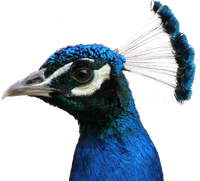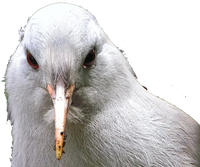(Adding categories) |
mNo edit summary Tag: sourceedit |
||
| (3 intermediate revisions by the same user not shown) | |||
| Line 1: | Line 1: | ||
{{speciesbox |
{{speciesbox |
||
| − | | edit_link = |
||
| color = {{Taxobox_colour|[[Animalia]]}} |
| color = {{Taxobox_colour|[[Animalia]]}} |
||
| name = California Condor |
| name = California Condor |
||
| Line 8: | Line 7: | ||
| status_ref = <ref name=IUCN2012>{{IUCN|id=106003821 |title=''Gymnogyps californianus'' | assessors=[[BirdLife International]] |version=2012.1 |year=2012 |accessdate=16 July 2012}}</ref> |
| status_ref = <ref name=IUCN2012>{{IUCN|id=106003821 |title=''Gymnogyps californianus'' | assessors=[[BirdLife International]] |version=2012.1 |year=2012 |accessdate=16 July 2012}}</ref> |
||
| trend = down |
| trend = down |
||
| − | | image = Gymnogyps californianus -San Diego Zoo-8a. |
+ | | image = Gymnogyps californianus -San Diego Zoo-8a.png |
| image_width=300px |
| image_width=300px |
||
| image_caption=At [[San Diego Zoo]], USA |
| image_caption=At [[San Diego Zoo]], USA |
||
| − | | regnum = [[Animal]]ia |
||
| − | | phylum = [[Chordate|Chordata]] |
||
| − | | classis = [[Bird|Aves]] |
||
| − | | ordo = ''[[Incertae sedis]]'' <small>(disputed)</small> |
||
| − | | familia = [[New World vulture|Cathartidae]] |
||
| genus = Gymnogyps |
| genus = Gymnogyps |
||
| species = californianus |
| species = californianus |
||
| − | | |
+ | | parent_authority = [[René Primevère Lesson|Lesson]], 1842 |
| binomial = ''Gymnogyps californianus'' |
| binomial = ''Gymnogyps californianus'' |
||
| binomial_authority = ([[George Shaw|Shaw]], 1797) |
| binomial_authority = ([[George Shaw|Shaw]], 1797) |
||
| Line 72: | Line 66: | ||
}} |
}} |
||
[[Category:Gymnogyps]] |
[[Category:Gymnogyps]] |
||
| + | [[Category:Genera of Cathartiformes]] |
||
Latest revision as of 06:52, 23 November 2016
| California Condor Temporal range: Early Pleistocene to Recent | |
|---|---|
| File:Gymnogyps californianus -San Diego Zoo-8a.png | |
| At San Diego Zoo, USA | |
| Scientific classification | |
| Kingdom: | Animalia |
| Phylum: | Chordata |
| Class: | Aves |
| Clade: | Inopinaves |
| Clade: | Afroaves |
| Superorder: | Accipitrimorphae |
| Order: | Cathartiformes |
| Family: | Cathartidae |
| Genus: | Gymnogyps Lesson, 1842 |
| Species: | G. californianus |
| Binomial name | |
| Gymnogyps californianus (Shaw, 1797) | |
| File:CaliforniaCondorRangeMap.gif | |
| Synonyms | |
|
Genus-level:
Species-level:
| |
The California Condor (Gymnogyps californianus) is a New World vulture, the largest North American land bird. This condor inhabits northern Arizona and southern Utah (including the Grand Canyon area and Zion National Park), coastal mountains of central and southern California, and northern Baja California. Although other fossil members are known, it is the only surviving member of the genus Gymnogyps.
The plumage is black with patches of white on the underside of the wings and the head is largely bald, with skin color ranging from gray on young birds to yellow and bright orange on breeding adults. Its huge 3.0 m (9.8 ft) wingspan is the largest of any North American bird, and its weight of up to 12 kg (26 lb) makes it nearly equal the Trumpeter Swan, the largest among native North American bird species. The condor is a scavenger and eats large amounts of carrion. It is one of the world's longest-living birds, with a lifespan of up to 60 years.[2]
Condor numbers dramatically declined in the 20th century due to poaching, lead poisoning, and habitat destruction.[3] A conservation plan was put in place by the United States government that led to the capture of all 22 remaining wild condors in 1987. These surviving birds were bred at the San Diego Zoo Safari Park and the Los Angeles Zoo. Numbers rose through captive breeding and, beginning in 1991, condors have been reintroduced into the wild. The California Condor is one of the world's rarest bird species: as of May 2012, population counts put the number of known condors at 405, including 226 living in the wild and 179 in captivity.[4] The condor is a significant bird to many Californian Native American groups and plays an important role in several of their traditional myths.
Other names
Description
Similar species
Behaviour
Diet
Calls
Reproduction
Distribution/habitat
Gallery
References
- ^ BirdLife International (2012). "Gymnogyps californianus". IUCN Red List of Threatened Species. Version 2012.1. International Union for Conservation of Nature. Retrieved 16 July 2012.
- ^ "Once nearly extinct, the California condor nears new milestones". CNN. April 27, 2011. http://www.cnn.com/2011/US/04/26/california.condor/index.html?hpt=C2.
- ^ "San Diego Zoo's Animal Bytes: California Condor". The Zoological Society of San Diego's Center for Conservation and Research for Endangered Species. Retrieved 2012-04-18.
- ^ Muldoon, Katy (May 20, 2012). "California Condors Hit a Milestone -- a Population of 405 -- after Nearly Going Extinct.". The Oregonian. http://www.oregonlive.com/environment/index.ssf/2012/05/california_condors_hit_a_miles.html. Retrieved 2012-05-20.
External links
| Projects | ||||||||
|---|---|---|---|---|---|---|---|---|
| ||||||||







